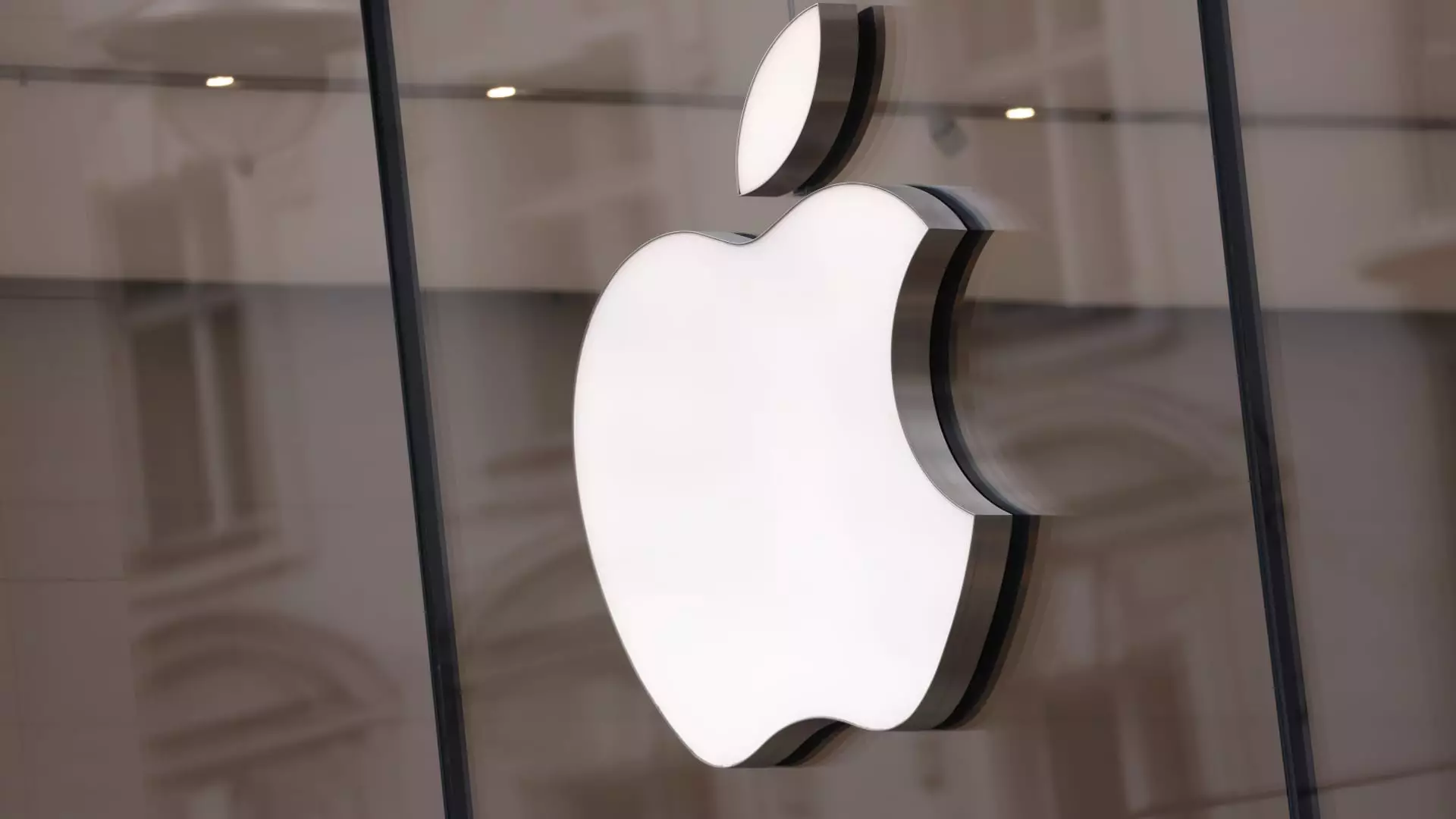In a surprising turn of events, tech stocks experienced a notable rebound, driven by a wave of optimism surrounding international tariff negotiations. High-profile companies, notably Apple, which saw a staggering 20% drop over three tumultuous trading days, witnessed a corrective uptick, climbing more than 3%. This rebound wasn’t isolated; fellow giants such as Nvidia and Tesla also cashed in on the newfound investor confidence, soaring approximately 6% and nearly 5%, respectively. It raises an important question: are we merely in a reactionary market, bouncing back from fear, or is the dawn of a resilient tech sector truly upon us?
The investment community thrives on speculation, and such jumps may be indicative of underlying vulnerabilities rather than solid growth prospects. Tariffs have long been a contentious issue, particularly for companies with heavy China exposure. The mere possibility of easing trade regulations should not blind us to the fragility of these tech companies. Their entire frameworks are built upon the shifting sands of international relations, making any meaningful recovery tenuous at best.
Healthcare Sector Soars with Governmental Confidence
Conversely, the healthcare sector enjoyed a strong uptick following an unexpected boost from the Centers for Medicare and Medicaid Services (CMS). The announcement of a higher-than-expected increase in government payments to Medicare Advantage plans caused leading stocks, including UnitedHealth Group and Humana, to skyrocket—6.7% and 10.8%, respectively. This news may paint a rosy picture for these companies, but is it ethical to rely so heavily on governmental support in an industry that should prioritize patient care and innovation?
Healthcare should not be a game of politics; it should be about people. It’s concerning that such significant financial shifts are sparked by political decisions rather than intrinsic market performance or advancements in medical technology. While investors celebrate these surges, we must ponder whether this dependence on governmental machinations fosters real value in the healthcare sector.
Financial Market Review: A Mixed Bag of Fortunes
Wells Fargo’s stock saw a near 4% bump following a favorable upgrade from Piper Sandler. The investment firm praised the banking giant’s attractive valuation amidst its recovery story. Yet, considering the bank’s tumultuous history of scandals and mismanagement, one must remain cautious before celebrating such market corrections. Can we genuinely trust that Wells Fargo has turned over a new leaf, or are we merely fools wishing for a fairy tale ending?
Meanwhile, Broadcom’s decision to initiate a $10 billion share repurchase program sent shares surging more than 7%. This strategy may reflect confidence, but what does it signify for long-term investment and growth? Share buybacks serve to enhance per-share metrics at the expense of more sustainable growth strategies. It raises the question: could the allure of short-term gains undermine the company’s future potential?
Fall from Grace: The Greener Pastures of Growth
On the flip side of the hopeful narratives, Marvell Technology showcased resilience in the face of adversity. With shares rising over 7% following a significant $2.5 billion sale of its auto ethernet business to Infineon Technologies, the company appears to be streamlining in a manner that could bolster stability. However, one can’t help but wonder if this initiative is merely a reactive step rather than a proactive one.
In stark contrast to these success stories, the tale of Janover unfolded dramatically with a shocking 31% drop following its drastic name change and cryptocurrency strategy pivot. The over 800% rally prior only underscores the volatility at play in the tech sector. In a landscape so willing to embrace the hype of cryptocurrencies, one must question the sustainability of such strategies in traditional software realms.
The Pharmaceuticals: Cautious Optimism Amid Market Fluctuations
The pharmaceutical field presents another set of contradictions. Eli Lilly saw a modest gain after an upgrade from Goldman Sachs, deemed a “compelling entry point” by analysts. Yet, like much of the market, these peaks are often countered by valleys, as seen with Tilray Brands’ more than 11% plummet after poor third-quarter results. Despite the promise of revenue growth, unmet expectations reveal an underlying instability that could augur further decline.
This cycle of soaring highs and crushing lows captures the essence of today’s stock market—a tumultuous structure driven more by investor emotion than by solid fundamentals. With every rise, fear looms; with every fall, doubt burgeons. In such a volatile environment, the true strength of companies may be obscured by momentary fluctuations.
The stock market remains a pulsating organism, affected by external factors and fueled by human emotions. As we navigate this choppy terrain, a balanced perspective is essential. Investors must remain vigilant, discerning between genuine growth and speculative bubbles that may burst at any moment.

